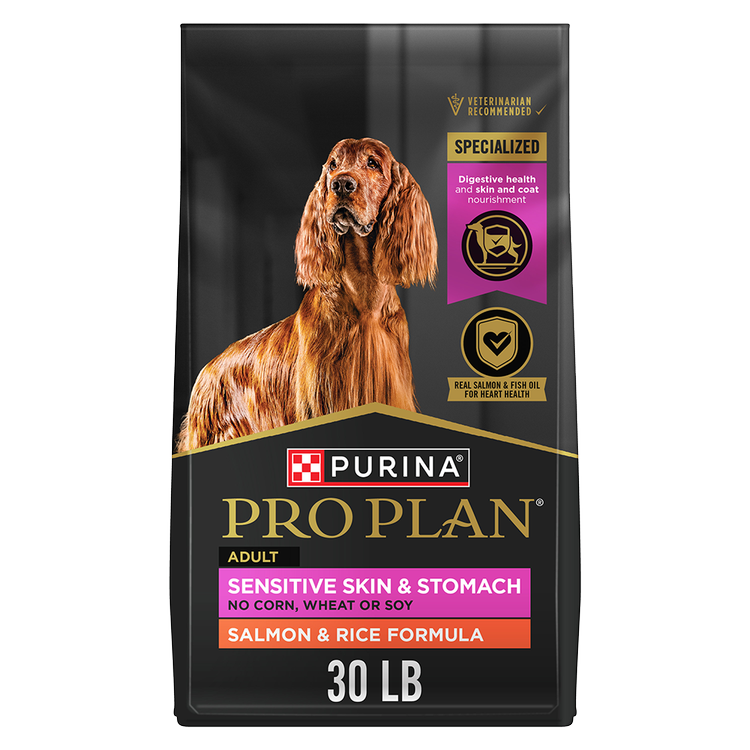Dog Rash: Common Causes, Symptoms & Treatments


A dog rash is a relatively common skin condition among our canine companions. Generally, a rash is characterized by irritated skin but the appearance can vary.
The good news is that, whether it’s a red rash on your dog’s belly or heat rash, the symptom often goes away on its own.
If you find one on your pet, however, keep an eye on it. A skin rash may be a sign of infection or underlying illness, especially if other symptoms present as well.
Read on to learn more about the causes of dog rash, how to identify it, and how to best treat it.
Causes of Dog Rash
Wondering why your dog has a rash? There could be several reasons as rashes aren’t specific to one kind of condition or disease. Here are some of the most common causes of dog rash.
Allergies
Skin allergies in dogs can cause irritation and may result in a rash. Flea allergies are particularly troublesome, while environmental allergies such as pollen and dust mites may also inflame the skin. Additionally, while less common, food allergies can be problematic as well.
Insect Bites
Just like humans, dogs suffer from insect bites as well. Mosquitoes, bees and certain ants are just a few of the insects that may bite them.
Overheating
When your dog can’t release enough heat through panting, a rash may develop on their skin.
Parasites
Mites and ticks are known to trigger intense itching and rashes, among other symptoms. Sarcoptic mange, caused by mites, can be especially irritating to the skin.
Bacterial Infection
Infections from bacteria (aka pyoderma) are associated with dog rash. Often, pyoderma is a complication of other skin diseases that cause intense itching.
Can Dogs Get Heat Rash?
Yes, dogs can get heat rash. Because they don’t sweat (for the most part), they rely on panting to cool themselves. As a result, a rash may occur if they’re struggling to lower their internal body temperature.
A dog heat rash usually develops on the belly. You may see redness along with bumps, sores or scabs. These symptoms are similar to other types of rashes, so if you’re unsure of the cause, note other factors like temperature and activity level, especially if your pet has been outdoors.
Dog Rash Symptoms
Trying to identify the signs of a dog rash? Check for these symptoms:
- Redness or inflammation
- Itchiness
- Bumps, pimples or sores
- Hair loss (aka alopecia)
- Dandruff or flaky skin
Dog Rash on Belly, Underarms & Groin
Rashes can appear anywhere on your dog, but three of the most common areas are their belly, groin and underarms (i.e., the location where their legs meet the chest or abdomen).
Causes such as allergies or insect bites can affect any of these areas. On the other hand, individual circumstances play a role as well.
For example, if your pet has a grass pollen allergy and they like to lay in your yard, you might expect to see a rash develop on their belly.
Do All Dogs Get Rashes?
All dogs can get rashes, but they may be more common in canines who are prone to skin conditions such as allergies (e.g., Chinese Shar-Pei).
Bacterial infections are also associated with rashes. Skin folds on a dog can create warmth and humidity, which allows skin bacteria to grow and create an infection.
Breeds with skin folds may be more susceptible to this type of infection, and include Pekingese, Bulldogs and Boxers.
Diagnosing a Dog Rash
Remember, skin rashes on dogs aren’t necessarily unusual. If one suddenly appears on your pet but there are no other abnormal symptoms and they don’t seem to be uncomfortable, you probably don’t need to worry.
If the rash doesn’t go away, looks especially irritated or makes your dog excessively itchy, contact your veterinarian.
When diagnosing the rash, they’ll likely consider your pet’s overall health, their history of allergies, home environment, and other factors.
Depending on what they suspect is the cause, your veterinarian may recommend allergy treatment, or conduct a biopsy or skin scraping if they think an infection is to blame.
Dog Rash Treatment
Treating a dog rash depends on the cause. Your veterinarian may recommend some of the following solutions:
- Allergy treatments. If mild skin allergies are to blame, over-the-counter antihistamines may eliminate the rash and make your pet feel better. More serious allergies might require more intensive treatments such as medication or even allergy shots.
- Grooming. Trimming your dog’s hair and bathing them with special shampoo may promote a healthy coat and soothe irritated skin. Oatmeal-based shampoo and hypoallergenic shampoos have anti-inflammatory properties and can help retain moisture in your pet’s skin.
- Medication. Anti-itch and anti-inflammatory medications may be in order for serious or recurring skin rashes.
- Medicated shampoo. Medicated dog shampoo can help alleviate dog rash if it happens as a result of an infection. Ask your veterinarian for recommendations.
- A modified diet. If a rash is a symptom of persistent skin problems, it’s a good idea to feed your pet a diet formulated for a healthy coat. Sensitive skin dog food and skin and coat supplements can provide the nutrients your canine companion needs.
Also, avoid treating a rash with home remedies, as you can unintentionally make it worse.
Remember, whether it’s a rash under your dog’s armpit or flea rash on their belly, dog rash is a fairly common skin condition. In many cases, it’s temporary and disappears on its own. Notify your veterinarian, however, if it persists or causes your pet pain.
For more tips, check out our other dog health articles for advice from our experts.
Related articles

Reward Yourself with myPurina
Earn and redeem rewards for Purina products with the myPurina app.






